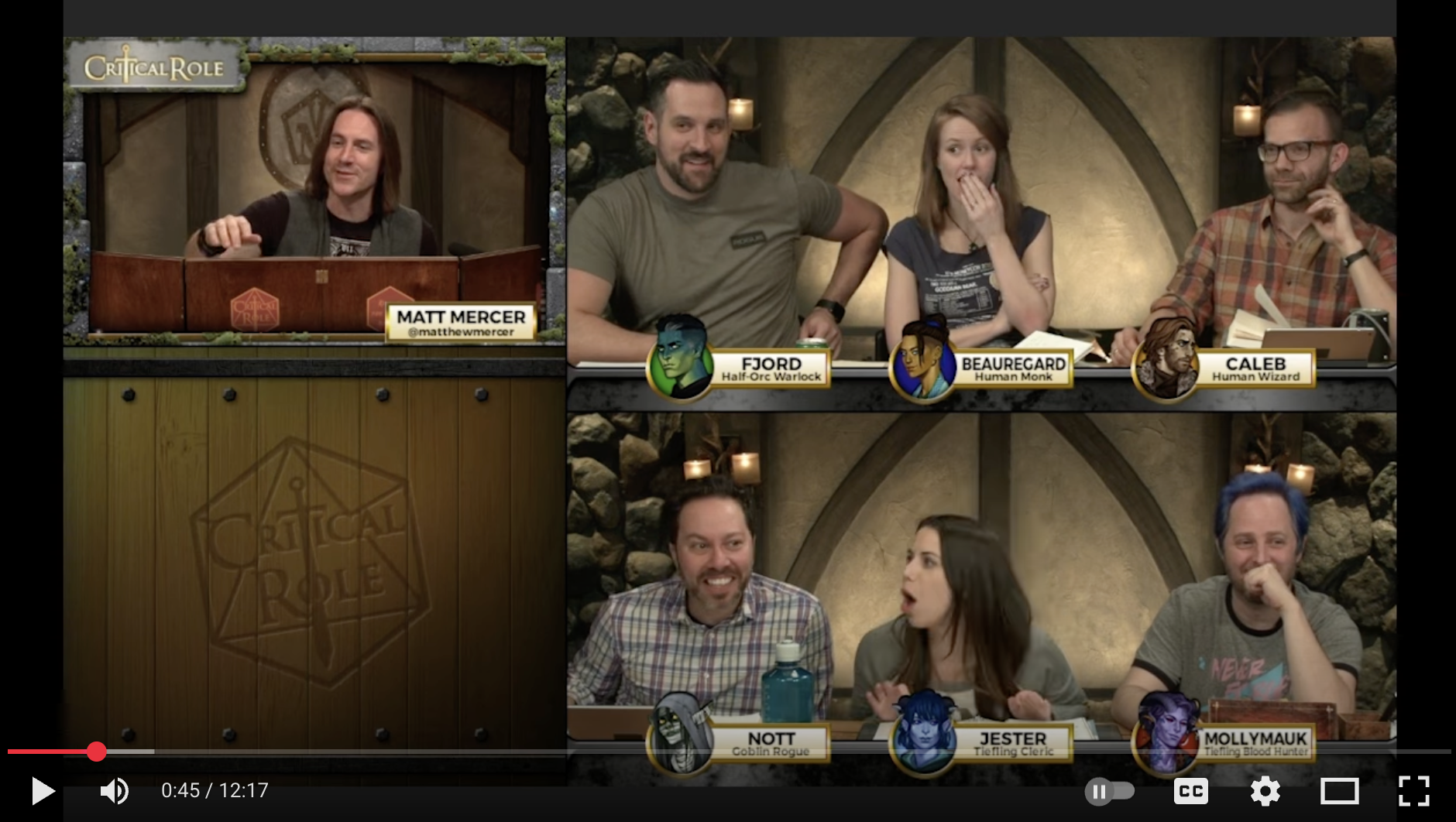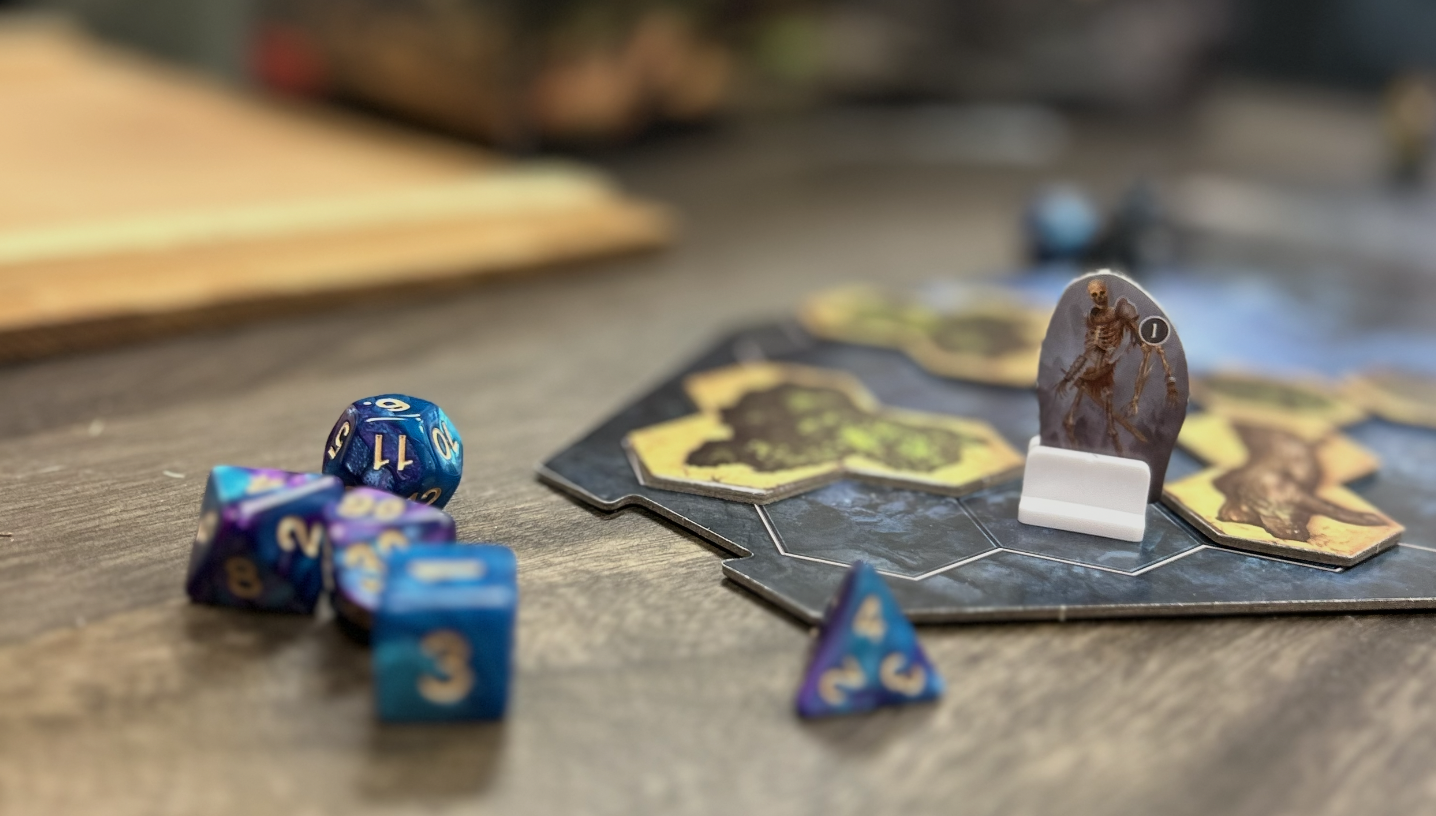Dungeons & Dragons & Diagnoses?!
You Will Play Dungeons and Dragons (I Hope)
Dungeons and Dragons. Maybe you’ve heard of it, maybe you’ve seen a video of people playing, or watched the movie that came out last year. But what is it? How do you play, and why do people play? Let’s talk.
My goal is to convince you to try playing D&D with your family or friends at least three times and see what everyone thinks of it. By the end of this article, you’ll be able to try it out. Why do I want you to play? Because I believe that it strongly helps with social skills, executive functioning and problem solving in a way that no other game can.
People play Dungeons and Dragons, or D&D, because it is the most supported and popular way to play a game that gives players control and agency in a fantasy world. It’s also funny. If you’re playing an adventure video game and you want to ask the blacksmith what their favorite dance move is, I’m guessing you’re out of luck. Video games are limited by the developers' programming.
D&D can be funny. It should be funny. Watch any of the most popular clips from shows like Critical Role and see how much the players light up when something goes wrong, or when a player comes up with a great line.
D&D is also…kind of impenetrable. It’s intimidating! But, there’s a shortcut. Three sessions to see if you’re interested and then you can say forget it! …or…maybe this becomes your game.
I’m going to go into my experience with D&D and how it revealed the benefits of this game for students with diagnoses and my own children, then we’ll get into how you can actually start playing yourself.
D&D&Diagnoses
I was part of leading a D&D club at school along with Randy Kelley. Our students have a variety of diagnoses including ones that make socializing a challenge. We ran students through a few scenarios to show what was possible, did some character creation lessons and 3d printed out a couple of rats. After our semester-long club ended, students told us that they had started forming a group and met up on weekends to play D&D! They took the initiative to come up with characters after trying out a few in our club, contacted friends and organized a play group. This is a big deal! One student loves to tell stories, so he wrote up a campaign (series of D&D sessions) and became the Game Master (GM or DM) of their sessions.
I’m not sure if you’ve ever been in charge of organizing a social group, but getting people together for a shared activity is a challenge! This group did so by scheduling time with parents for transportation and met up at a local board game cafe to play. Kudos to them!
A Game Master (or Dungeon Master) is the person with the hardest job. If we’re comparing D&D to video games, they act as the game itself, explaining what players see as they walk into a new town, create battles with monsters, and act out roles of non player characters (NPCs). If you’re looking to start up a D&D session, chances are you’re going to be the Game Master to at least get things rolling.
Since the high schoolers took so well to D&D, I collaborated with the school counselors to begin sessions with the young adults on campus. They came up with characters and role-played (acting in character) through a few different settings including a church with hidden treasure, a tavern with suspicious owners, and a farm with a skeleton problem. The feedback was that they loved playing, were surprised and impressed with each other’s role playing and accents, and wanted to continue playing over the summer.
Socially speaking, this was definitely a win, and helped one of the young adults get over a self described rough day, turning around his attitude for the remainder of it.
The biggest success I’ve had with D&D has been at my own home. My family has played through about 30 sessions and have made a pretty big impact on a fantasy world I made up based on things they enjoy. One of my children has an OCD diagnosis and part of their irritation is germ focused. So what did I do? Sewer session!! The party had to make their way through sewers to find a lost kitten and deal with a rat infestation. Let’s break this down in detail:
The game offers mechanics (rules and systems) that allow the gamification of just about any situation. The D20 is a famous item used in D&D and it is a 20 sided dice that determines success or failure of just about any attempt, called “checks”. You want to climb difficult terrain? Acrobatics Check. Wanna scare a bad guy into helping you? Intimidation Check. In this case the characters did not do a Perception Check before entering the sewers, so the sewers played out as follows:
Characters read on a town message board there is a lost kitten last seen near the sewers
Players ask around town to confirm where the sewers entrance is located
Players jumped down a sewer entrance
They did not check the area first (by doing a Perception check)
They landed in sludge and took damage
They had to make a Constitution roll to see if they were grossed out
Every turn, players rolled a D20 and might take poison damage
Each player who failed that earlier Constitution check was at a disadvantage
The sewer sessions lasted for a total of about three hours, with characters walking through sludge for the majority of the event.
What did this do? My child, who cannot stand to be dirty (touching a doorknob after someone else requires handwashing) was visualizing themselves in a sewer, knee deep in sludge…for three hours! Visualizing is important, but there’s more. With each turn, they had to take a small amount of damage based on the sludge. They also had to roll each turn to see if they could deal with the grossness of the situation. If they rolled well, great! They aren’t affected, but if they roll poorly, they are now at a disadvantage, meaning that when they fight the aforementioned rats, they have to roll twice and take the worse result. Not only are they picturing themselves in a gross situation, but they are constantly fighting against it through the mechanics of the game and ultimately succeeding in the attempt to rescue someone’s poor kitten!
Through playing this scenario, the subtle lesson is that even if something is gross, or a nuisance, you can push through and succeed in your goal. Exposure therapy is incredibly helpful for an OCD diagnosis, but boy is it tough. Going through “secret D&D therapy” allows for some of the work over longer periods of time, with an easier buy in. For us, it worked as a great supplement to try out exposure tasks without thinking of them as a real life test.
Read on at your own risk. If you thought the last section was nerdy, hoo boy…
PLAYING 3 SESSIONS
The first step is to see how others do it well. Your first few sessions will look nowhere near as elaborate or smooth as this, but it’s a good example of what the game can look like. Watch these self proclaimed nerdy voice actors do what they do best in a Critical Role clip (heads up there’s one curse word that slips but otherwise a clean video):
Clip Description: Role playing example of 6 Adventurers visiting a shop in a new town looking for supplies. This video shows a DM who loves creating voiced characters to breathe life into an otherwise simple encounter.
Now it’s your turn! Again, you’ll probably have to GM your first games, unless you have a group of friends who are already playing, and if so then awesome! If not, which is almost definitely the situation you’re in, I suggest starting with D&D Light (a term I’m using for a much less complicated version of D&D, with enough to get a feel for the experience). D&D Light is what I started on with my kids and students.
Either contact me at agrimes@gatewayacademyhouston.org or follow the setup below to begin playing a simplified version. I’ve probably missed some helpful points or explanations so feel free to reach out. I love talking about this stuff.
If you’re looking for a place to play in Houston, there are a variety of hobby cafes where people are regularly playing card games, board games and rpgs. One of the best game stores that holds regularly scheduled events is Dragon’s Lair which also has
”how to learn” sessions scheduled through the year for a variety of games.
What you need: Dice, character sheets, brief plot
Dice: Dice in D&D are called D(number), with the (number) meaning the number of sides. A D20 has 20 sides, a D12 has 12 sides, and a D6 is the standard 6 sided dice most are familiar with. You can get a set of D&D dice for pretty cheap, around $6 for one set or $15 for a bunch. Each player needs a D20, and eventually will use all the dice, but can start with just a D20.
Character sheet: You can get a free character sheet from the D&D website if you want to fill one out in detail, or for D&D Light, just use the following makeup of a party:
Human Fighter - good at…hitting stuff
-gets +3 to rolls involving damage (fighting enemies, breaking down a door)
Elf Rogue - good at sneaky stuff
-gets +3 to rolls involving stealthy situations (trying to steal or sneak past someone)
Dwarf Wizard - good at magic stuff
-gets a ranged spell that hits 3 enemies for 3 damage each (use once per battle)
Halfling Cleric - good at healing stuff
-gets a spell that heals one person 5 points (use once per battle)
This is a good party, just have players pick the one that sounds fun from this list above and read on. Every character gets 15 HP (Hit Points = their health) This scenario is very close to the one I ran with both my family and the young adults.
D&D deals with a lot of magic and otherworldly scenarios. The following is pretty standard lore from D&D, but if you disagree with any of the subjects, swap out for something else! A tavern could become an ice cream stand. The church can be a book store. Villainous skeletons could be replaced with angry badgers. The locations and interactions are just placeholders that give players a touchpoint of familiarity so whatever works best for your group…works best!
The following is for the DM’s eyes only! Read aloud the italic sections, and read the rest to yourself to give you context for the locations.
Story - “You were all visited in a dream by a mysterious individual and told to meet at the small town of Goatsmilk to help with a problem. When you arrive, there is a large tree in the middle of a town square with several buildings surrounding. From your viewpoint, it looks like there is a church, a tavern, a farm and a graveyard. Where would you like to visit first?”
The town of Goatsmilk has 4 locations to visit. A tavern, a church, a graveyard and a farm. Anything the party tries to do that is at all challenging requires them to roll a D20. 5 or higher is a success for something easy, 10 for medium, 15 for difficult. For example if they want to cross a small flowing river, a 10 or higher would succeed. If they are trying to jump over a small gap, a 5 or higher would succeed.
Tavern - “You enter the tavern and see a woman wiping down tables, and a man cleaning glasses behind a bar. The woman notices you enter, walks up to you and asks - We don’t see many travelers around here, what brings you to Goatsmilk?”
Enter the tavern and meet the owners, Glenda and Gary who are suspicious of outsiders, but suggest helping out with trouble at the farm or graveyard to prove trustworthiness. Both involve fighting off enemies. Feel free to let characters role play and order food and talk with Glenda and Gary, or keep it quick and send the party on their way to fight stuff.
Church - “You enter the church and see an old man sweeping the floor. He does not notice you enter.”
Meet the caretaker of the church who mentions there is a problem with the graveyard and skeletons attacking?!
Graveyard - Once the party enters, skeletons approach from the nearby forest and a BATTLE takes place
Battle - a series of turns ending in the defeat of enemies or players, these battles are very easy so the players will win. For a very simple battle flow, do the following:
Have players and the DM roll a D20 to find out the order of turns
Whoever rolled highest will take the first action, then clockwise from then on until the battle ends
The DM is in charge of all enemies, so on the DM’s turn, the enemies move and attack
On each players turn, they can describe how they move (towards enemy, hide, etc) and attack once (by rolling a D20 and see if they hit the enemy, Skeleton is 10+, Thief is 8+)
Skeleton enemies - 5 skeletons. Each skeleton does 2 damage when they attack someone. Each skeleton has 5 HP (you have to do 5 damage total to defeat each skeleton). Players have to roll higher than 10 to hit the skeleton.
Farm - Meet Perry and Tom (father and son) who are having problems with thieves stealing their crops. Prepare for a BATTLE with the thieves.
Thief enemies - 3 thieves. Each thief does 2 damage when they attack and can steal if characters are carrying anything valuable. Players have to roll higher than 8 to hit thieves. Each thief has 8 HP (you have to do 8 damage total to defeat each skeleton)
I hope you found something useful in the above article and all of the gameplay content. Please reach out if you’re interested but aren’t sure where to start!
Andrew Grimes has been working with children and adults with learning differences professionally since 2009. He began as an art instructor and brings his love of design to the marketing needs of Gateway Academy. His motivation comes from students connecting with their creative side, whether it’s through art, music or games.





